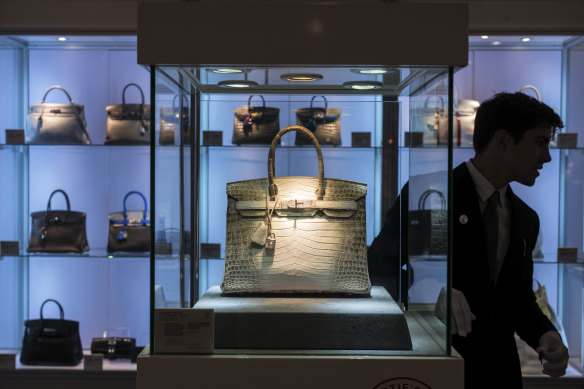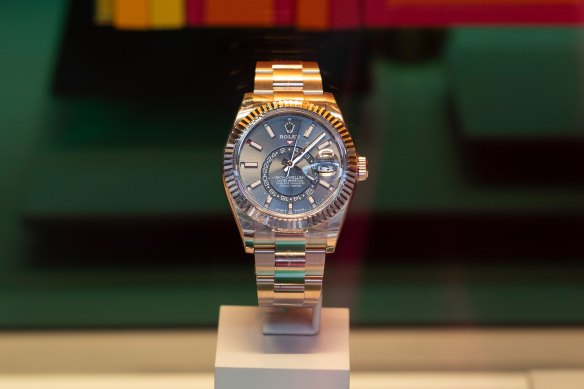A Hermes Diamond Himalaya Birkin bag fetched $US400,000 ($619,982) at a Paris auction in 2022. Now personally, if I were to choose between that handbag and a two-bedroom apartment in Melbourne’s Fitzroy North, I’d be taking the apartment.
However, this isn’t about my personal lifestyle choices, this example highlights the exponential growth trend of non-traditional assets such as luxury goods, collectables, and art.
In the same way we think about and understand traditional equity such as property or stocks, non-traditional assets can provide a stream of wealth generation over long periods of time.

The holy grail of handbags: Birkin holds a special place in the hearts of collectors.Credit: NYT
Like any asset, these specific items can hold their value or more often than not increase over time due to their limited production – think economics 101, supply and demand. If an item such as a watch is only produced 500 times across a global market the underlying demand will skyrocket, pushing prices higher.
Brands such as Rolex, Patek Philippe, Audemars Piguet and Omega are all producing luxury watches; however, the key understanding here is not only the limited production but also the relationship between customer and brand.
You can’t just waltz into their boutiques and buy any watch you want, usually your name will be placed on a waiting list which can be up to five years.
The second consideration is that for the more limited and special watches, they simply will not allow you to purchase the watch as you don’t have a previous purchase relationship with the brand. In the world of luxury goods that’s an incredibly important distinction.
Therefore, the increased demand for rare and exclusive products translates to an extraordinary secondary or intermediary market.
In 2022, the global second-hand market for luxury goods reached a market value of $US31.1 billion ($48.5 billion) and is expected to forecast to grow $US51 billion by 2028.
As investors the attractiveness of the growth potential is often overlooked as non-traditional assets are just that, “non-traditional”. However, according to Boston Consulting Group, from August 2018 to January 2023, average prices in the second-hand market for top models from the three largest luxury brands (Rolex, Audemars Piguet and Patek Philippe) rose at an annual rate of 20 per cent, compared with an annual rate of 8 per cent for the S&P 500 index.
This form of wealth generation isn’t for everyone, however if you would like to turn your interest, hobbies or niches into an attractive equity proposition it may be something to consider.

Luxury watch brands are a hit with investors betting on alternative assets.Credit: Arnd Wiegmann/Bloomberg
In order to be effective, it’s quite obvious that research and interest in the particular area is a must – the process is akin to that of traditional investors. Much like stock picking, non-traditional assets require us to see value where others don’t or before others do.
Whether it’s a handbag, art piece, watch or collectables, the principle is the same – you need to be able to see ahead of the curve, or in other words, where the demand will come from before it arrives.
Products that are limited, special editions or collaborations often create the largest waves in markets – remember the aim of the game is to understand and quantify human nature at the end of the day. It’s our own psychology that drives the necessity for non-traditional assets, the “hype” is generated by the market and the underlying interest.
As the world experiences slow economic growth, these non-traditional assets may provide increased resilience compared with a sole focus on traditional equity markets. While both traditional and non-traditional assets will experience downturns, exposure to the latter provides investors with more control due to their tangible nature.
It also provides many with a more “involved” investment process – these assets will be items or within niches that are of great interest to you and therefore will drive a personalised experience that isn’t available when investing in an ASX limited company that you have little to no involvement with.
Non-traditional may just become the traditional for young Australians, in an environment where wealth generation is narrowing – it’s time to shift the needle and rethink how we go about it.
- Advice given in this article is general in nature and is not intended to influence readers’ decisions about investing or financial products. They should always seek their own professional advice that takes into account their own personal circumstances before making any financial decisions.
For expert tips on how to save, invest and make the most of your money, delivered to your inbox every Sunday, sign up for our Real Money newsletter here.